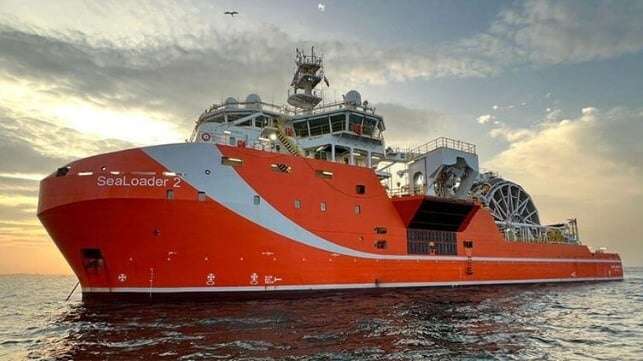Petrobras Charters Unique CTV and Looks to Order Another with MOL

Japan’s Mitsui O.S.K. Lines and Brazilian state-owned oil company Petrobras (Petroleo Brasileiro) are looking to expand on a unique concept vessel, the cargo transfer vessel, jointly pioneer and proven during trials in Brazil. The two companies have now entered into a long-term charter for one of the two prototype vessels while reporting they have also decided to enter into negotiations for a new CTV shipbuilding contract by the end of 2024.
MOL acquired the Norwegian company SeaLoading Holdings in 2022, after entering the CTV business in 2019. SeaLoading was originally started a decade ago to pioneer the concept of the CTV. The company built two of the 3,100 dwt vessels in China in 2018 and 2019.
SeaLoading started a trial period with Petrobras for SeaLoader 2 in January 2022. They report completing more than 30 crude oil offloading operations from Petrobras’ FPSOs located in the Santos Basin during the trial.
The vessels are unique in that they are approximately 292 feet (89 meters) in length designed to replace DP shuttle tankers for the offloading and transfer of crude oil. They highlight that shuttle tankers require special cargo handling equipment for transferring oil usually to a storage terminal, or in calm, sheltered waters directly to large crude oil tankers.

SeaLoader alongside a tanker demonstrating the gangway connection and the vessel also has a loading reel (SeaLoading Holding)
The CTV was designed with side loading capabilities and a dynamic positioning system. It has both a retractable gangway for oil transfers and a loading reel for the offloading of crude. The CTV is capable of acting as an intermediary between the FPSO and the crude oil tanker eliminating the time and cost of transferring the oil via the shuttle tanker.
The operating system also provides the opportunity to significantly reduce CO2 emissions compared to when a shuttle tanker is employed in the transfer. MOL reports the CTVs are expected to achieve a 60 percent reduction in CO2 emissions off the Brazilian coast compared to using a DP shuttle tanker for offloading in the Santos Basin. When used off the coast of Uruguay the emissions' reduction will increase to as much as 80 percent.
SeaLoading holds the patent for the CTV technology. The company’s two vessels, the only ones of their kind, are both registered in the Bahamas and currently operating in Brazil.
